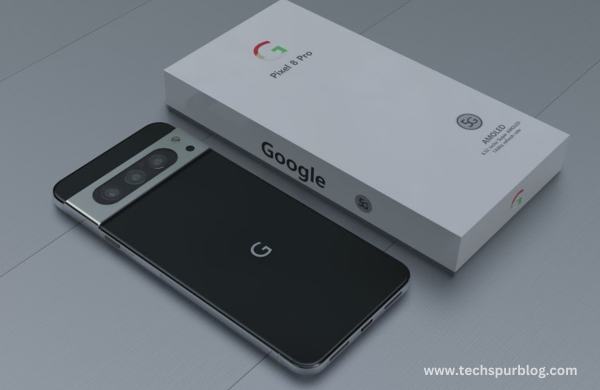
Google’s upcoming flagship smartphones, the Pixel 8 and Pixel 8 Pro, are generating significant excitement due to their remarkable camera sensor upgrades. Building upon the success of their predecessors, the Pixel 7 and Pixel 7 Pro, these new devices promise enhanced photography capabilities. In this article, we will explore the camera enhancements featured in the Pixel 8 series, including improved low-light performance, larger sensor size, advanced pixel technology, video recording capabilities, and innovative software tricks.
Upgraded Camera Sensor: ISO Cell GN2 50MP
The Pixel 8 and Pixel 8 Pro will bid farewell to the ISO Cell GN1 camera sensor found in their predecessors and embrace the ISO Cell GN2 50MP sensor. While the resolution remains the same, this new sensor captures up to 35% more light, resulting in superior low-light capabilities.
The ISO Cell GN2 is a sizable 1/1.1-inch sensor, making it one of the largest camera sensors available. It boasts 1.4-micrometer pixels, enabling detailed photography in regular settings, with the ability to switch to Samsung’s 4-in-1 pixel binning technology in low-light scenarios. This technology effectively creates a larger 2.8-micrometer super pixel, further enhancing low-light photography.
Also Read: Google’s Entry into the Foldable Phone Market: Introducing the Pixel Fold
Advanced Features and Capabilities
The ISO Cell GN2 sensor in the Pixel 8 series introduces several advanced features and capabilities. The inclusion of Dual Pixel technology allows for efficient phase detection autofocus, ensuring quick and accurate focusing. The sensor also incorporates Smart ISO Pro, which enables instant high dynamic range (HDR) imaging with minimal motion artifacts. Additionally, the camera supports 1080p and 4K video recording at 120 frames per second (fps), showcasing its versatility in capturing high-quality videos.
8K Video Recording Possibilities
While the Pixel 8 series camera sensor is capable of capturing 8K footage at 30fps, it remains uncertain whether this feature will be included in the phones due to concerns about heat generation. The Pixel 7, for instance, experienced heating issues when recording 4K videos at 60fps. Nonetheless, the capability is there, offering potential for future improvements in capturing high-resolution video content.
The Power of Tensor G3 Chip
The Pixel 8 series will be powered by the Tensor G3 chip, which not only supports 8K 30fps video recording but also enhances overall device performance. While further details about the Tensor G3 chip are available in accompanying videos, its inclusion ensures smooth operation and optimized camera functionality.
Also Read: MacBook 12in m7: An Innovative Laptop with Unique Features
Ultra Wide-Angle Camera
The Pixel 8 Pro incorporates a 64-megapixel Sony IMX787 sensor, sourced from the Pixel 7a, for its ultra wide-angle camera. This sensor is nearly twice as large as the Pixel 7 Pro’s Sony IMX386 sensor and is paired with a wider lens, promising improved image quality and a more expansive field of view. Meanwhile, the Pixel 8 retains the 12-megapixel Sony IMX386 ultra wide-angle camera, presenting a somewhat perplexing choice considering the superior sensor available in the Pixel 7a.
Other Camera Features
The Pixel 8 series retains the Time of Flight (TOF) sensor found in the Pixel 7 and 6, enhancing autofocus performance. The Pixel 8 Pro may also introduce an 8×8 TOF sensor, allowing for even more advanced depth sensing capabilities. Additionally, the 11-megapixel front-facing camera remains unchanged from the Pixel 7 Pro series, ensuring continued high-quality selfies. The telephoto camera department will also remain the same, offering a consistent photography experience.
Innovative Software Tricks
One notable software feature introduced in the Pixel 8 series is Adaptive Hot, reminiscent of a function previously seen in Nokia Lumia smartphones from 2013. Adaptive Hot adjusts the flash intensity based on the scene and other inputs, resulting in improved low-light images and preventing overexposure. Furthermore, a Segmentation AWB function leverages artificial intelligence (AI) to analyze and process scenes in various segments, optimizing image quality. These software advancements are made possible by the new Tensor G3 chip.
Also Read: Why the Google Pixelbook 12in Should be Your Next Device
Conclusion
As the release of the Pixel 8 and Pixel 8 Pro approaches, anticipation is building around the impressive camera sensor upgrades these devices will offer. With the introduction of the ISO Cell GN2 50MP sensor, larger sensor size, advanced pixel technology, expanded video recording capabilities, and innovative software tricks, the Pixel 8 series aims to set new standards in smartphone photography.
Google’s commitment to improving camera performance and leveraging cutting-edge technology ensures that users will be able to capture stunning images and videos with ease and creativity.

Leave a Reply